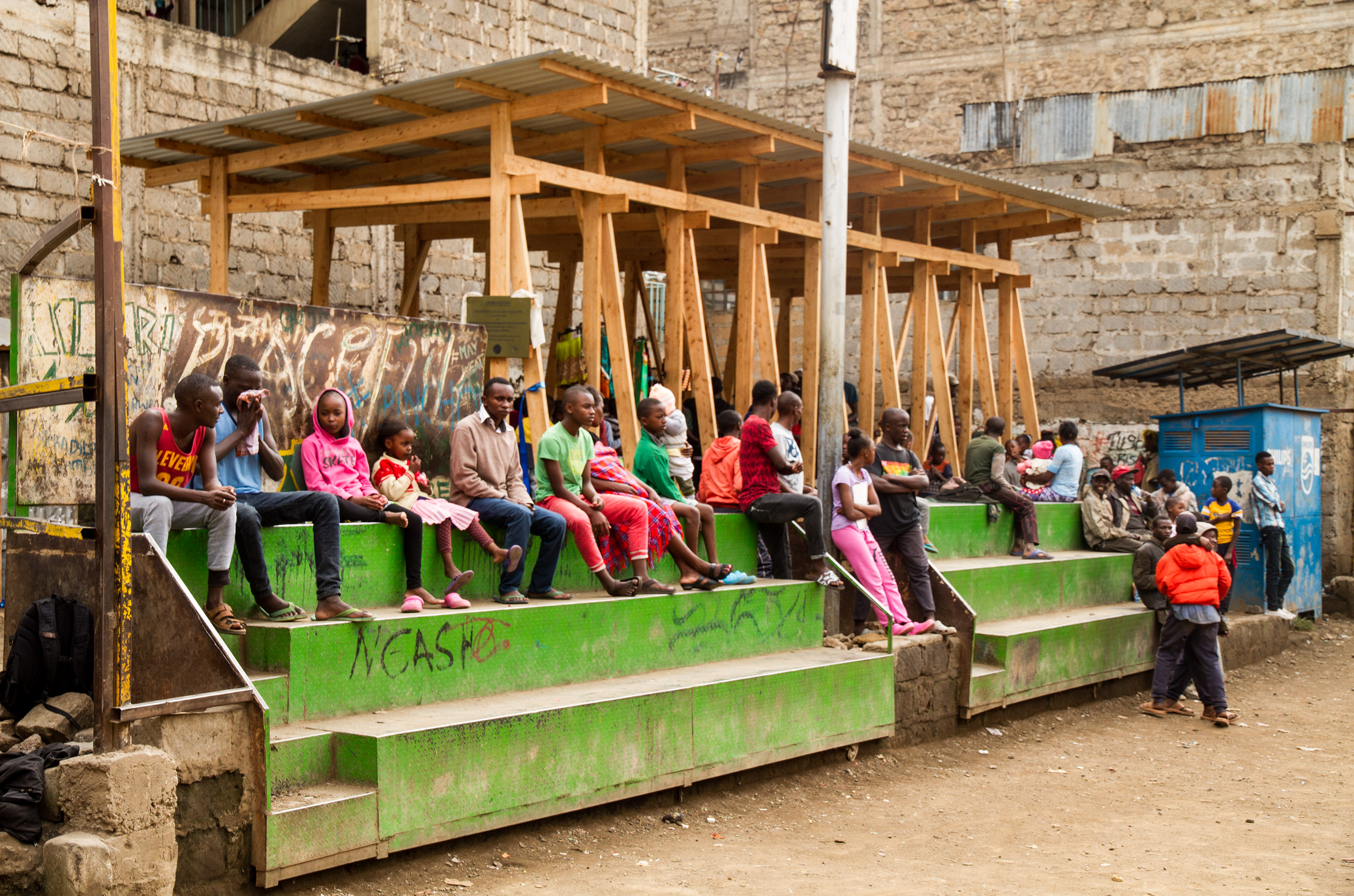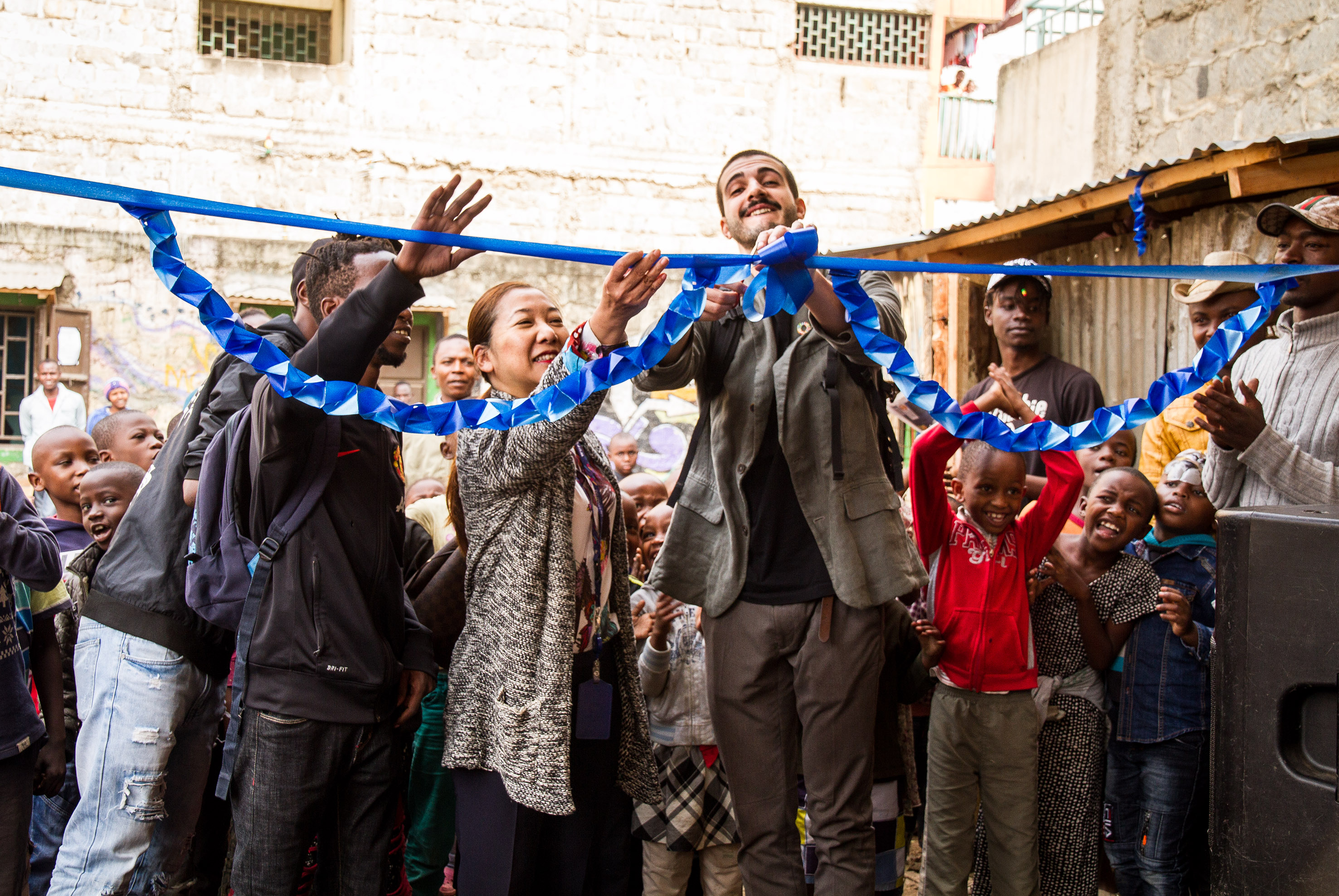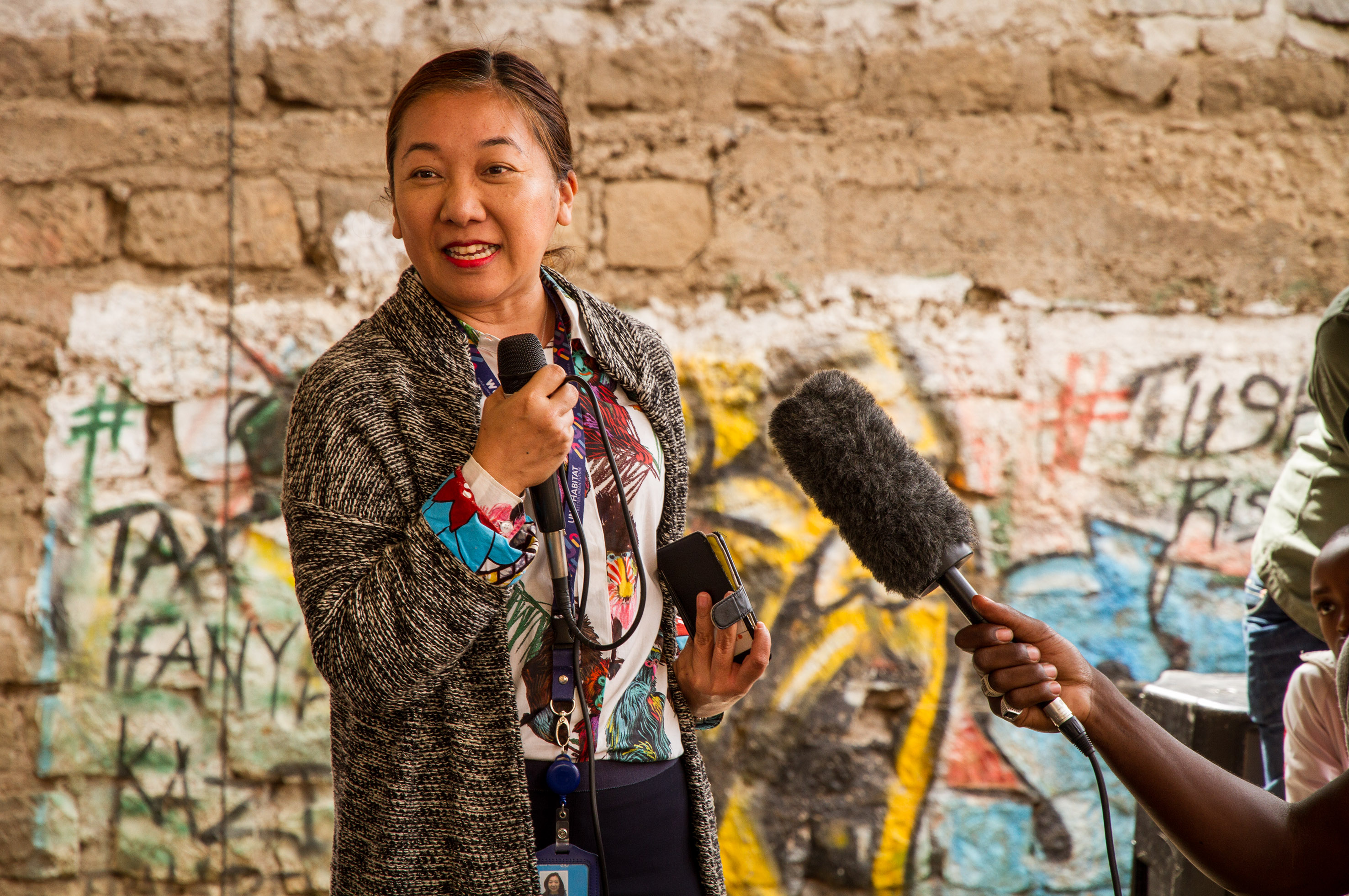Nairobi, 20 June 2019 – There is a bright new playspace overlooking the Mulago Kubwa football pitch in the informal settlement of Mathare in Nairobi. The wooden pavilion, a tall open structure with wooden floors, timber beams, and a roof has been renamed 'The Children's Corner.'
And today about 60 young children were there to mark the opening of the play area.
“Actually it’s been here about a week already,” said Isaac Mutisya Muasa, a Youth Coordinator from the area. As he speaks children cartwheel and dance on the flat, wooden floor behind him. “Already school groups have been using it as a place to teach children to sing and play.”

UN-Habitat partnered with the Embassy of Sweden in Nairobi and ARVET, an engineering firm from Sweden, to build the model pavilion promoting the use of sustainability harvested wood for last month’s UN-Habitat Assembly in Nairobi.
“We couldn’t ship the version we were going to showcase, from recycled Swedish wood. So we visited woodworking shops in Nairobi to source the local timber and managed to build this in time for the opening of the Assembly,” explains Ivan Segato, the Architect from ARVET,
Once the week-long UN-Habitat Assembly was over, the idea was floated to give the building to the Mathare community youth group to be used as a safe and fun space for children and their families to come together play and interact.
“This is the role of architecture,” smiles Segato, “It's a spacial answer to a human need. Here in Mathare I understand there is a strong need for free space, and it’s great the community can use this space as they see fit.”

“We need more spaces like this in communities like this,” emphasizes Kazumi Ogawa, UN-Habitat Chief of Staff. “Spaces where children and their families can have a safe space to hang out, and maybe have a few parties!”
Douglas Ragan, UN-Habitat Youth Coordinator explains how this is part of UN-Habitat’s continuing partnership with the community of Mathare. “Over this past week the architects from ARVET built the structure in partnership with the community,” he says.
The Children’s Corner, hosted by the Mathare Environmental Conservation Youth Group, is in Mulago Kubwa, in Mathare.
As the music starts up and the dancing begins the Master of Ceremonies, Gerry Lumumba, yells over the microphone in Swahili, “This is your space. It’s the Children's Corner!” The young children cheer loudly and start dancing. He encourages them concluding, “So anytime you want, or anytime you feel shy, you can come here and play, because it’s your space!”

Youth and UN-Habitat’s Global Public Space Programme
Public spaces for children and youth play a vital role in ensuring their overall wellbeing in the cities and communities especially in the most marginalized areas. UN-Habitat’s Global Public Space Programme aims to improve the quality of public spaces worldwide. Public spaces are sites which are accessible to all and include parks, streets, pavements, markets and playgrounds. Good public spaces enhance community cohesion and promote health, happiness, and well-being for all citizens.
![Children infront of the new Childrens Corner in Mathare [UN-Habitat/Kirsten Milhahn]](/sites/default/files/2019/06/IMG_0447_small_0.jpg)
Article: Aoibheann O'Sullivan
Photos: Kirsten Milhahn